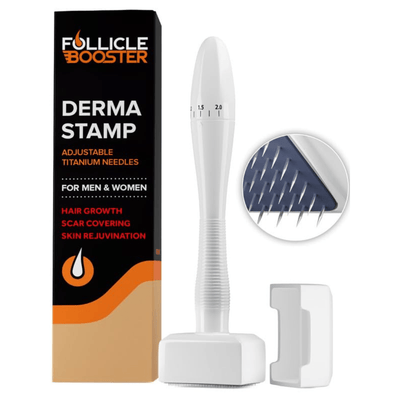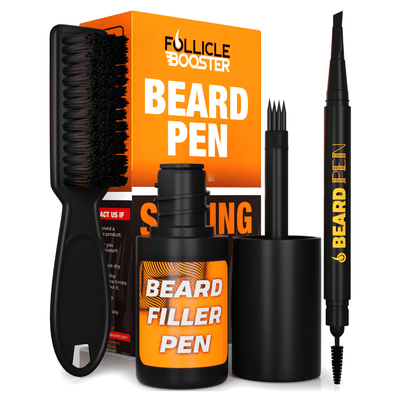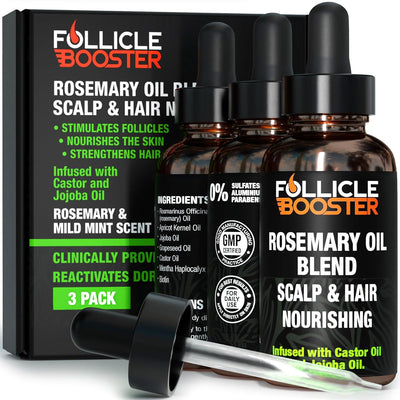Healthy hair is something most people strive for, but did you know that understanding your hair’s porosity is critical to achieving it as well as preventing hair loss? Hair porosity refers to how well your hair absorbs and retains moisture, directly affecting how it responds to products, treatments, and styling methods. Knowing whether you have low, medium, or high porosity hair can help you tailor your hair care routine more effectively. One of the easiest ways to determine your hair’s porosity is by doing a simple porosity test at home.
Let's find out what hair porosity is, why it matters, and how to test it quickly and easily.
What is Hair Porosity?
Hair porosity refers to the hair's ability to absorb and retain moisture. The cuticle, which is the outer layer of the hair strand, plays a crucial role in this process. When the cuticle is tightly bound, the hair has low porosity and struggles to absorb moisture. On the other hand, when the cuticle is more open or raised, the hair has high porosity, allowing moisture to enter more efficiently and making it more prone to losing it quickly.
There are three levels of hair porosity:
- Low Porosity: The cuticles are tightly closed, meaning moisture has difficulty penetrating the hair shaft. Products tend to sit on the hair's surface rather than being absorbed. This level is prone to hair shedding.
- Medium (Normal) Porosity: The cuticles are slightly open, allowing the right amount of moisture to enter and remain in the hair. This hair type typically holds styles well and doesn’t require much maintenance.
-
High Porosity: The cuticles are raised or damaged, which allows moisture to enter quickly but makes it difficult for the hair to retain that moisture. High-porosity hair is often prone to frizz, tangles, and breakage.

Why Does Porosity Matter?
Knowing your hair’s porosity is essential because it helps determine the types of products you should use and the treatments that will be most effective. For instance:
- Low porosity hair may need lighter products that don’t weigh it down and special techniques like applying heat during deep conditioning treatments to help open the cuticle.
- Medium porosity hair is typically easier to manage. Products are absorbed well, and you won’t need to be as meticulous with treatments as those with low or high-porosity hair.
- High porosity hair needs extra attention to keep moisture locked in. Heavier products like butter and oils may help seal the cuticle and retain hydration.
How to Perform the Porosity Test
The hair porosity test is quick and easy. Here’s how you can do it at home:
-
Clean a Strand of Hair: Your hair should be free from any product buildup for accurate results. Take a strand of clean, dry hair for the test.

- The Water Test: Fill a clear glass with room-temperature water. Drop the strand of hair into the glass and observe how it behaves.
-
Analyze the Results:
- Low Porosity: If the hair strand floats on the water and doesn’t sink after a few minutes, you likely have low porosity hair.
- Medium Porosity: If the hair gradually sinks to the middle of the glass, it’s a sign of average or medium porosity.
- High Porosity: If the hair sinks quickly to the bottom, your hair has high porosity, meaning it absorbs moisture too quickly.
Adjusting Your Routine Based on Porosity
Once you know your hair’s porosity, you can make smarter decisions about your hair care routine:
- Opt for lighter products for low-porosity hair and use heat during conditioning treatments to help open up the cuticle.
- For medium porosity hair, continue using balanced moisture and protein treatments to maintain its healthy state.
-
For high porosity hair, focus on sealing in moisture by layering heavier products like oils and butter, and avoid excessive heat or chemical treatments that can further damage the cuticle.

The hair porosity test is a simple yet effective way to understand how your hair absorbs and retains moisture. Knowing your hair’s porosity lets you decide which products and treatments will work best for you. This helps maintain healthy, vibrant hair and saves you time and money in the long run by avoiding products that don’t align with your hair’s needs.











